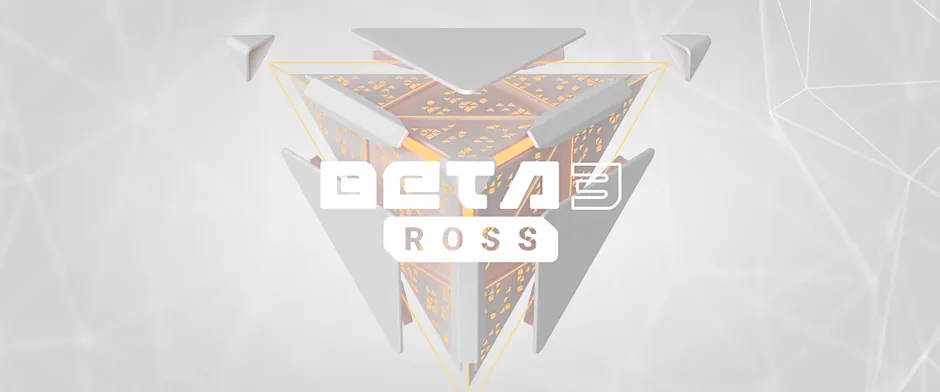We’re pleased to announce the release of EdgeDB Beta 3: “Ross”.
As always, this release is named after a nearby star: Ross 128, a red dwarf in the equatorial zodiac constallation of Virgo, about 11.007 light-years from Earth. Fun fact: it’s the origin of the alien species in the 2019 TV adaptation of “War of the Worlds” (in a departure from the original novel, where the invaders are from Mars). [Wikipedia]
Ross 128 may be a dwarf star, but this release is big. It features major enhancements to EdgeDB spanning security, tooling, and EdgeQL syntax. Click a link below to jump to that section.
This is our final beta release! For the next few weeks, we’ll be focusing on stability and bugfixes in anticipation for an RC release, followed shortly by a 1.0 release (finally!). Follow @edgedatabase to stay apprised of new releases.
What’s EdgeDB?
Skip to the new features if you’re already familiar with EdgeDB.
EdgeDB is an advanced open source relational database designed with an obsessive focus on developer experience. It addresses the shortcomings of SQL databases without sacrificing speed, safety, or expressive power.
Built atop PostgreSQL, EdgeDB takes the best features of SQL, ORMs, and GraphQL—declarative schemas, migrations, easy deep fetching—and bakes them into a strict relational database:
-
an expressive and composable query language called EdgeQL;
-
a high-level data model and type system;
-
first-class support for schema migrations;
-
built-in JSON conversion and parsing;
-
out-of-the-box interoperability via REST and GraphQL;
-
first-party database clients for JavaScript/TypeScript, Python, and Go.
Installation
To get started with Beta 3, first install the latest version of our CLI.
If you’ve never used EdgeDB before
First, install the CLI with a single command:
# macOS/Linux
$ curl --proto '=https' --tlsv1.2 -sSf https://sh.edgedb.com | sh
# Windows
$ iwr https://ps1.edgedb.com/ -useb | iexThen go through our 5-minute Quickstart to spin up your first EdgeDB instance!
If you have an older version installed
Run edgedb self-upgrade to get the latest CLI version, then run edgedb
cli migrate. We’ve restructured how the EdgeDB CLI stores configuration
files under the hood, so edgedb cli migrate is required to update all
existing configs to the new format. This command does not upgrade any
instances.
If your projects rely on one of EdgeDB’s client libraries, upgrade those to the latest version! Older versions of the client libraries aren’t compatible with Beta 3.
To upgrade existing instances, you have a couple options:
-
If you’re using
edgedb project, navigate to the root directory of your project and runedgedb project upgrade --to-latest. This will install the latest version of EdgeDB, upgrade your instance, and update youredgedb.toml. -
If you have instances that aren’t linked to a project (not recommended), you can upgrade those simultaneously with
edgedb instance upgrade --local-minor.
Now onto the new features!
A re-designed CLI
Designing APIs for command line tools is hard.
Until now, we’ve tried to conform to a consistent edgedb <action>
structure: edgedb create-database, edgedb list-databases, edgedb
migrate, etc. This results in lots of hyphenated commands, but it’s a
simple, flat structure that lends itself to autocompletion and scannable
--help output.
But with the recent introduction of edgedb server and edgedb project
command sets, this approach became untenable. We’ve decided to re-design our
CLI to conform to a more conventional edgedb <group> <action> structure.
This means fewer hyphens (yay!) and a more intuitive API:
CLI COMMANDS:
dump Create a database backup
restore Restore a database backup from file
configure Modify database configuration
query Execute EdgeQL queries
info Show information about the EdgeDB
installation
migration apply Apply all unapplied migrations
migration create Create a migration script
migration status Show current migration state
migration log Show all migration versions
migrate An alias for `edgedb migration apply`
project init Initialize a new or existing project
project unlink Clean-up the project configuration
project info Get various metadata about the project
project upgrade Upgrade EdgeDB instance used for the
current project
instance create Initialize a new EdgeDB instance
instance list Show all instances
instance status Show status of a matching instance
instance start Start an instance
instance stop Stop an instance
instance restart Restart an instance
instance destroy Destroy an instance / remove the data
instance link Link a remote instance
instance unlink Unlink a remote instance
instance logs Show logs of an instance
instance upgrade Upgrade installations and instances
instance revert Revert a major instance upgrade
instance reset-password Reset password for a user in the
instance
server Manage local EdgeDB installations
database create Create a new DB
describe object Describe a database object
describe schema Describe the schema
list List databases, object types, and more
cli upgrade Upgrade the 'edgedb' command-line toolOne noteworthy change: we’ve split up edgedb server into two buckets:
edgedb server and edgedb instance. We realized that edgedb server
was actually two tools mushed together:
-
A tool for managing installed EdgeDB versions, e.g.
edgedb server {install|uninstall|list-versions}. These commands are staying the same. -
A tool for managing local EdgeDB instances, e.g.
edgedb server init,edgedb server stop, etc. These commands are being moved underedgedb instance:edgedb instance start,edgedb instance destroy, etc. Notably,edgedb server initis nowedgedb instance create, to be more consistent with thecreatecommands for databases and migrations.
API design is hard, but we’re confident this new CLI is easier to learn, use, and understand.
Free shapes
EdgeQL now supports top-level “free shapes”, so called because they aren’t bound to a pre-existing object type. They provide a new way to execute several expressions in a single query.
# simple expressions
SELECT {
string := "Iron Man",
number := std::random(),
boolean := (SELECT std::random() < 0.5)
}This provides a convenient way to aggregate the results of several subqueries, regardless of their cardinality, which wasn’t previously possible. Free shapes can be used at any level of depth within a query, not just the top level.
# complex expressions
SELECT {
empty_set := <str>{},
users := (SELECT User),
blog_posts := (SELECT BlogPost),
number_of_users := count((SELECT User)),
nested_shape := { nesting_level := 2 }
}This is particularly useful when used in conjunction with WITH clauses.
Below, we use free shapes to implement a simple pagination query.
WITH
skip := <int64>$skip,
remaining_users := (SELECT User ORDER BY .id OFFSET skip),
page_results := (SELECT remaining_users LIMIT 10)
SELECT {
page_results := page_results { id, name },
next_offset := skip + count(page_results),
has_more := count(remaining_users) > 10
};This is a convenient way to execute several expressions at once. Under the hood, each element in the shape is executed as a separate subquery, then the results are merged into a “virtual object”. There is no direct analog for this syntax in SQL.
Simplified enum syntax
In earlier versions, specifying a particular element of an enum required explicitly casting a string literal:
SELECT User
FILTER .relationship_status = <RelationshipStatus>'ItsComplicated'Now EdgeQL supports a more familiar dot notation syntax:
SELECT User
FILTER .relationship_status = RelationshipStatus.ItsComplicatedA new “relative duration” type
Beta 3 introduces cal::relative_duration, a new
built-in type for date manipulation. Unlike std::duration,
cal::relative_duration does not represent a precise measurement of time;
instead, it represents “calendar durations” like “3 months” or “2 years”.
Because all years and months don’t have the same number of days, you can’t
simply represent these values as some number of milliseconds.
edgedb>
SELECT <cal::relative_duration>'2 years 3 months'{<cal::relative_duration>'P2Y3M'}Previously, it was difficult to perform logical operations such as “postpone
this event by a year” without resorting to fiddly manipulations of ISO date
strings. With relative_date it’s very simple and explicit:
edgedb> ....... ....... .......
WITH
initial_date := <datetime>'2020-01-01T00:00:00Z',
delta := <cal::relative_duration>'1 year'
SELECT initial_date + delta;{<datetime>'2021-01-01T00:00:00Z'}Read the full documentation here.
TLS support
EdgeDB now supports TLS connections, allowing for fully encrypted client/ server communication and mitigating the risk of eavesdropping or man-in-the-middle attacks. TLS is also required for all instances running Beta 3 or later.
To that end, all EdgeDB instances now require a certificate and private key to establish secure connections with the client.
-
For local development instances, a self-signed certificate will be auto-generated when you upgrade your instances to Beta 3 or later.
-
For production instances, it is recommended to generate a certificate/key pair using a third-party certificate authority like Let’s Encrypt. If you’re using the EdgeDB Docker image, you can provide paths to these files with the
EDGEDB_TLS_CERT_FILEandEDGEDB_TLS_KEY_FILEenvironment variables (docs). Alternatively, provide these paths toedgedb-serverusing the--tls-cert-fileand--tls-key-fileflags.
These certificates are automatically validated by the EdgeDB client libraries for JavaScript/TypeScript, Python, and Go.
Start using Beta 3
For a full breakdown of the bug fixes and stability improvements in Beta 3, check out the full Changelog.
Looking to learn more about EdgeDB?
-
If you’re just starting out, try the 5-minute Quickstart.
-
To dig into the EdgeQL query language, try the web-based interactive tutorial — no need to install anything.
-
For an immersive, comprehensive walkthrough of EdgeDB concepts, check out our illustrated e-book Easy EdgeDB. It’s designed to walk a total beginner through EdgeDB, from the basics all the way through advanced concepts.
To keep tabs on future announcements, follow us on Twitter @edgedatabase!


